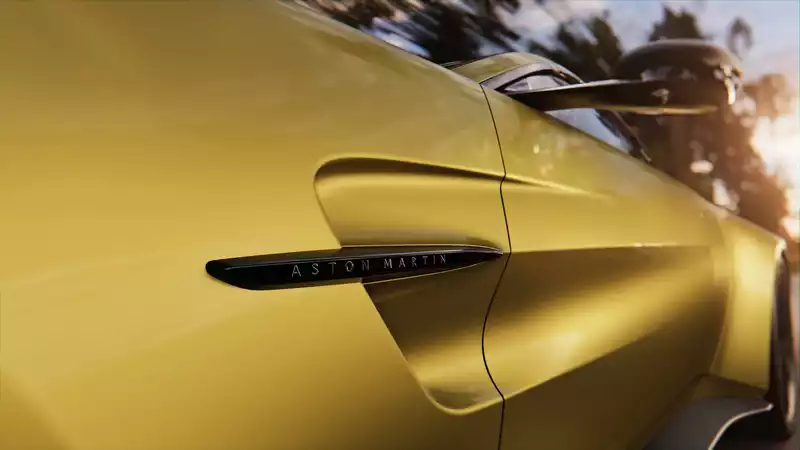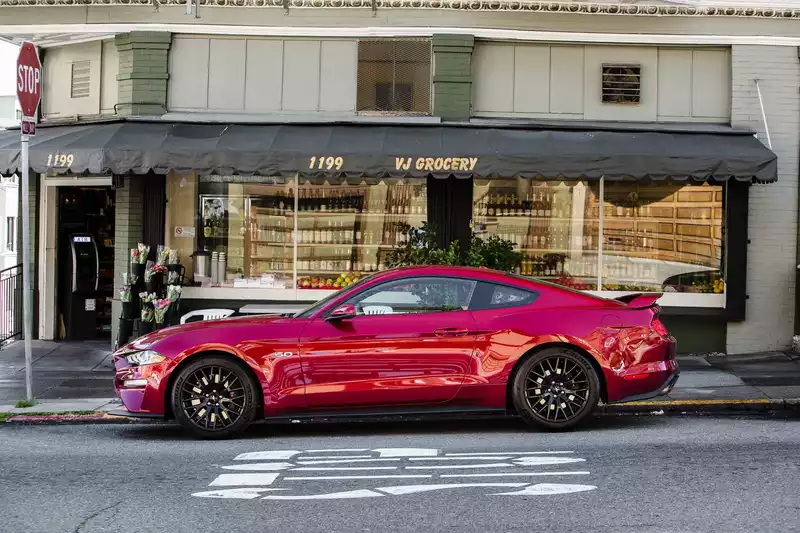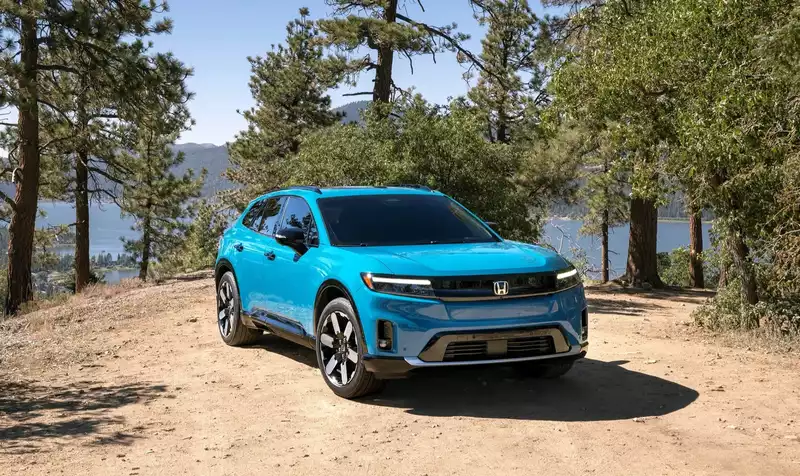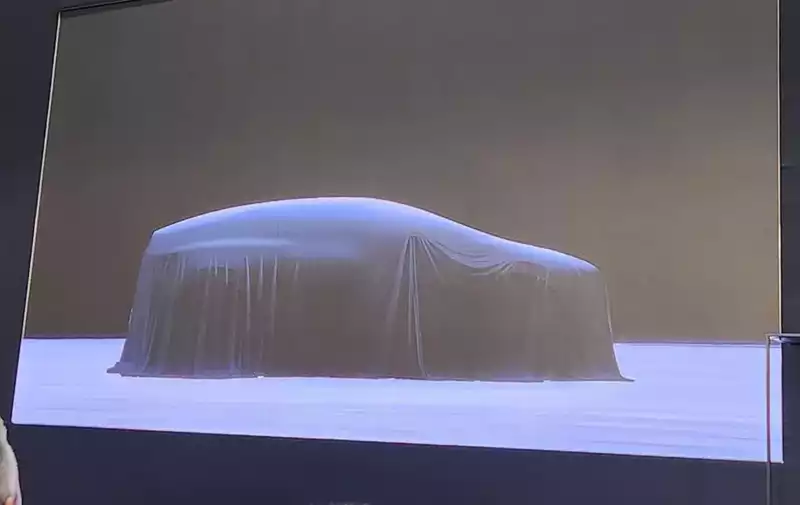The Mini Cooper junkyard has been reborn as a racing simulator.

For Brent Chaney, a race car bed from Little Tikes has always been cool. In fact, as an adult, he wanted a Ferrari F40 bed.
That was too much of an obstacle, so Chaney looked for something else to satisfy his car obsession: as a child of the 1980s, he fondly recalled the arcade game Cruis'n USA. It had a seat, steering wheel, shifter and pedals, all of which immersed him in the game. Consequently, he changed his mind about turning the race car bed into a race car simulator, which he decided to build for his man cave in his new home in Salt Lake City.
His friends said he couldn't do it. He literally said: "Hold my beer."
Starting with software
A fine artist and marketing consultant, Chaney is no stranger to car projects. He ran a racing store and tuning company, Turtle Factory, where he modified Nissan, Minis, and Toyot cars, mostly for time racing. He clearly had skills in creating simulations.
The project started with software, not a car. As a simulator, Cheney chose iRacing, "arguably the best racing game for the PC". iRacing allows the seat to be moved in relation to the screen, providing a left-handed perspective as in a real car.
Chaney decided to rebuild his PC to run the program. He doubled all of iRacing's system requirements. He chose top-of-the-line hardware.
The computer is equipped with an Intel Core i9 9900K 3.6 GHz eight-core Intel Core i9 processor, a Cooler Master Hyper 212 RGB Black Edition 57.3 CFM CPU cooler, and an Asus PRIME Z390-A ATX LGA1151 motherboard. On the board are installed: two Vengeance DDR4-3000 8GB memory, providing 16GB of RAM, and graphics card - NVIDIA GeForce RTX 2080 8GB Founders Edition. The system runs Microsoft Windows 10 Home and is powered by a 2.5-inch, 1TB SanDisk Ultra 3D SSD. The system is installed in a Thermaltake View 37 ATX case and is powered by a Corsair CXM 750W 80+ Bronze semi-modular ATX power supply.
The equipment had to fit
Chaney, who assembled the system, needed a vehicle in which to install it. There were several criteria in selecting a vehicle. First, as few modifications as possible. It had to be a sports car that could be modified by an enthusiast. I wouldn't buy a 1999 Toyota Corolla four-door," Cheney said.
The car also had to have a cool factor, but not too cool. Even if I got a 911 Turbo for free, there's no way I'd strip it down and put it under my house," Cheney said.
Cheney's budget for the car was $2,500, and he originally wanted a convertible. He found a damaged 1997 BMW M3 in the local classifieds, but it was sold out from under him. In retrospect, Cheney says he's glad it didn't work out because convertibles let the light in. The coupe was better because it provided a darker environment."
His next choice was a 1990s Mitsubishi Eclipse, leather-trimmed like Brian O'Connor's in the movie Wild Speed. But he knew it would have to be cut apart to fit in the basement, and that it would be difficult to weld it back together without unsightly seams.
Cheney noticed that the R53 Mini Cooper had a rear side window that wrapped around the rear pillar, was made of a lot of plastic, and was two-tone, making it easier to hide the seams. He knew these features were the right choice.
A 2005 Mini Cooper S with a ticking engine was listed for sale in local classifieds for $2,000. Chaney offered the owner $1,000, and the car was his.
Disassembling the car
Chaney placed the Mini's transmission in the classifieds as a You Pull It offer. One man offered to pick up the entire transmission and suspension for $1,000.
While the buyer pulled out the guts to move the Mini, Chaney removed the interior trim, doors, hatches, trim, windows, and all wiring and fasteners, leaving only metal from the Mini. The two of them worked in the garage.
Chaney then used a DeWalt 60V Max FlexVolt cordless reciprocating saw and a 6-inch Diablo Steel Demon blade to cut the body into eight pieces.
"In fact, we cut the entire car with just two blades," Chaney says.
To keep the house from smelling as bad as the car (editor's note: is it really that bad?), Chaney pressure-washed the parts several times.
Assembly
Chaney took all the parts to the basement and began assembling them on a custom-made wooden platform.
He fastened the car together using over 200 metal brackets. Starting with three sections in the rear, Chaney refined it to four sections in the front and then added the roof.
"When I got to the roof, I realized how out of place everything was. He installed one side and then realized the other side was off by about an inch. The whole roof had to be oiled, and the 1/4-1/2 inch error had to be caulked with scraps."
"There is no engineer in me. I'm an artist, not an engineer," Cheney joked.
With no suspension to mount the wheels, Chaney simply installed the wheels in the wheel wells.
Before installing the carpets, seats, and trim, Chaney hooked up a Harman Kardon 5.1 surround-sound home theater system behind the kick panels. He then installed a Fanatec Podium DD1 F1 Edition steering wheel and speaker. The original driver's seat could be used with this system.
The Samsung CHG90 curved monitors Chaney chose were aptly placed right on the edge of the window from A-pillar to A-pillar. It's like we created a monitor for this car," says Cheney. The car was a complete miracle that everything fit like that."
.
After assembling the car, Chaney installed the simulator guts in the engine bay and several rolls of iPhone-controlled LED lights underneath for maximum effect.
Chaney also added a keyboard to the cockpit to control the computer. He turns the system on and off by opening the hood and turning on the computer, but there are plans to hook up a push-button start in the Mini's interior.
In total
Cheney spent about $6,500 and six weeks on the project. This is much cheaper than buying a Ferrari F40, and the resulting simulator will provide many hours of enjoyment.
Cheney has turned a childhood dream into something unique, achievable, and impressive. In doing so, he has surpassed the exciting experience offered by Cruis'n USA many years ago.
As expected, hold my beer.
.




